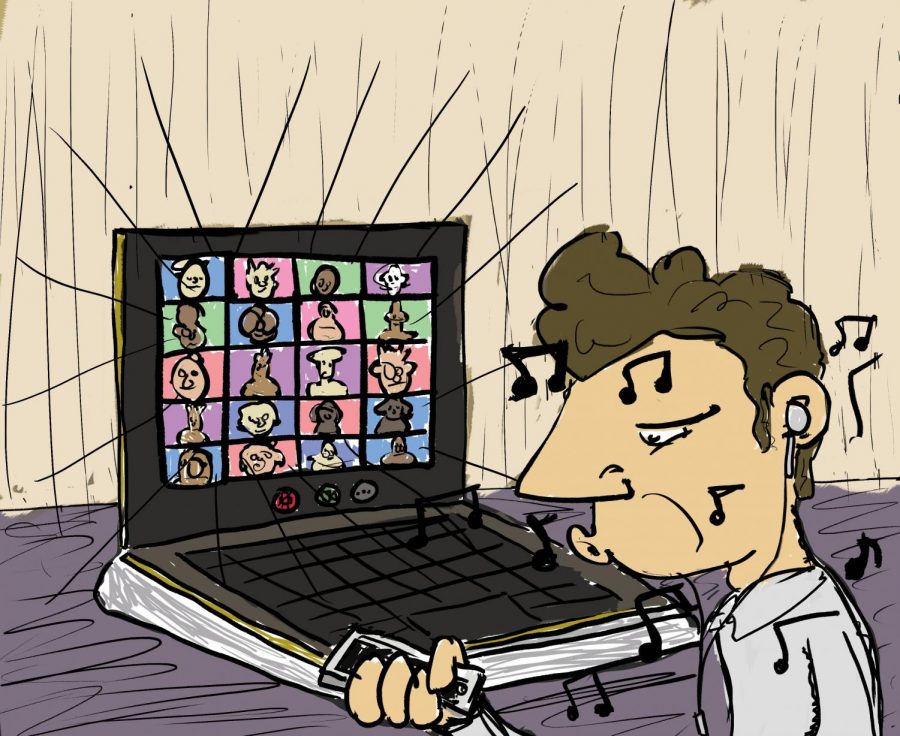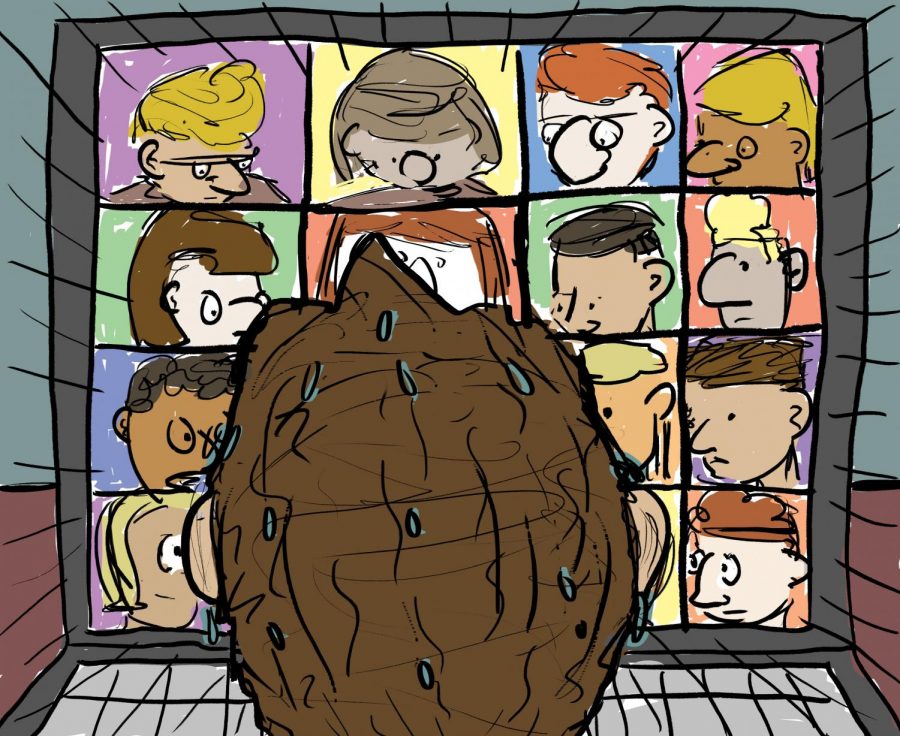Should cameras be mandatory during remote learning?
November 23, 2020
Why cut the cameras?
With LHS’ new rule on cameras, if your teacher prefers your camera to be on, just turn it on. It may not be ideal, but we are in the middle of a pandemic, so really none of this is.
So, it’s official. Starting Monday, Nov. 23, LHS will be completely remote until the end of January. The announcement has left teachers scrambling to plan their lessons while students also try to prepare themselves for the switch.
One of the changes that has been made to the remote learning style is that all students must join Google Meet in their classes for each period. This will allow them to attend lectures/get instructions, similar to regular school.
Unlike in the spring, the expectation will be that all students must keep their cameras on during their classes. Students with legitimate reasons to have their camera off must reach out to their house offices and make other arrangements as needed.
Now, it may seem like your teachers are forcing you to turn your camera on for your classes because they hate you and want to make you miserable, but I promise that isn’t the case.
Teachers are expected to teach remotely for around 30-45 minutes. This means they will spend about half of the 90-minute period lecturing. Imagine giving a speech in a room full of people that you know are listening, yet you can’t see them and have no idea how they are reacting to what you’re saying.
That’s what teachers are expected to do. Five days a week.
Teachers have so much to juggle as we make the switch to remote learning. Isn’t the least we can do turn on our cameras? Being able to see students’ faces as they teach will make teachers feel more comfortable, making the period go more smoothly overall.
Not only this but using your camera during classes also resembles the school environment. In the days before COVID-19 (if you can believe there was a time we didn’t wear masks everywhere) you came in and sat through all your classes, which is basically the equivalent to having your camera on. It means being present.
Although I understand it will be early in the morning, and you would much rather secretly sit on TikTok while class is in session, we must remember that although school will be online, it is still school.
You wouldn’t lay down and watch TikToks in the middle of precalculus in school, so don’t do it during your Google Meet.
With the madness of remote learning weighing down on everyone right now, we should do our best to be cooperative and make the process as easy as possible.
If your teacher prefers your camera to be on, just turn it on. It may not be ideal, but we are in the middle of a pandemic, so really none of this is.

When she isn’t making lattes at O’Sheas or editing a feature article, Isabella can be seen with her adorable German short-hair pointer, Sawyer. She spends most of her time at Big Buddies, doing crafts, and working on her upcoming senior project. Isabella is friendly, hardworking, and loves to make people laugh.
Why force the cameras?
The rule at LHS is that a students camera must be on. Some students feel uncomfortable with having their camera on for all to see.
Wake up. Dress in something comfortable. Eat some food. Get ready for another day of school.
Then it hits you: You’re not going to LHS. Instead, you have to sign in to your computer and join a meeting.
Wait. That means your face, along with the living space you cherish, will be broadcasted to 20-24 people at least four times. Every. Single. Day.
But what happens to people who aren’t comfortable with this? Their anxiety will skyrocket. This will result in making them feel trapped, or out of place. You can’t stop thinking about what others are thinking of you. The teacher is just static noise in your ear as you drown in negative thoughts.
This is the reality for many students during remote learning. It’s hard for them to come into in-person school, where it’s easier to blend in and lay low. Where they could better hide themselves from others.
The current Remote 2.0 expectations for students who wish to keep their camera off can be detrimental to people with these mental health issues. This, in turn, could result in a hindrance to receiving a good education overall. Having to contact your house office or specific teachers can be difficult for those who may not want to share why they are uncomfortable in the first place.
If a student is uncomfortable, they shouldn’t have to explain themselves or their mental/emotional struggles; it is not the school’s place to ask those questions.
Furthermore, if a student is uneasy, this atmosphere could create negative affects on their learning ability. Would forcing a student to be uncomfortable not go against the mission of a school in general?
Teachers are meant to foster a comfortable learning environment for all their students. If a student is uneasy, teachers need to accept that and work with them to improve the situation.
Now I do realize that everyone is stressed right now and simply want the easiest uniform way of doing this. In most cases, students should have their camera on or change their background if that’s what the issue is. It’s on the students to help teachers adjust as well.
Now, as many may realize, students who feel at ease with remote learning could abuse the ability to turn off their camera. The solution is to use lessons interactively, making sure students and their participation are accounted for.
For instance, when giving a virtual lecture, the teacher could ask a question relevant to the given lecture, lesson, etc. If a student who does not have their camera on doesn’t answer the said question using their microphone or typing an answer into the class chat, then action should be taken.
Remote learning is difficult for everyone, especially students and teachers. Not understanding a student’s needs will lead to resentment, disinterest and will hurt them. It’s our responsibility as a community to help them learn properly.


